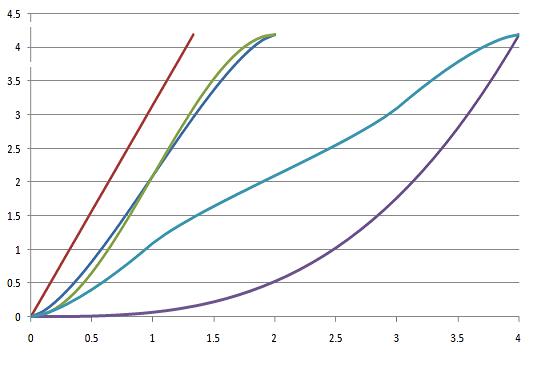Or search by topic
Number and algebra
Geometry and measure
Probability and statistics
Working mathematically
Advanced mathematics
For younger learners
Immersion



Consider these solids:
1) A sphere of radius 1cm
2) A solid cylinder with height $\frac{4}{3}$cm and radius $1$cm
3) A solid circular cone with base radius $1$cm and height $4$cm.
4) A solid cylinder of height $\frac{4}{9}$cm with a hole drilled through it, leaving an annular (ring-shaped) cross-section with internal radius $1$cm and external radius $2$cm.
Can you sketch what each solid would look like?
Can you work out the volume of each solid?
Experiments are conducted where a solid is chosen and has a string firmly attached at a fixed point. The solid is then lowered at a rate of 1cm per minute into a beaker of water and the height of displaced water measured, with graphs of height against time drawn.
The results are measured on the following chart:

Can you work out what the two axes represent?
Can you work out which curve corresponds to which solid and in which orientation it is lowered into the beaker? (Note: One solid is used twice, in two different orientations).
Could you sketch the curve for the same solids in other orientations? What about different solids?
Extension task: Can you find equations which represent the volumes of the immersed parts of the solids? They vary in difficulty; if you cannot find the equation explicity, can you describe clearly what needs to be found? Reproduce as much of the above graph as you can.
You may also like
Concrete Calculation
The builders have dug a hole in the ground to be filled with concrete for the foundations of our garage. How many cubic metres of ready-mix concrete should the builders order to fill this hole to make the concrete raft for the foundations?
In a Spin
What is the volume of the solid formed by rotating this right angled triangle about the hypotenuse?

